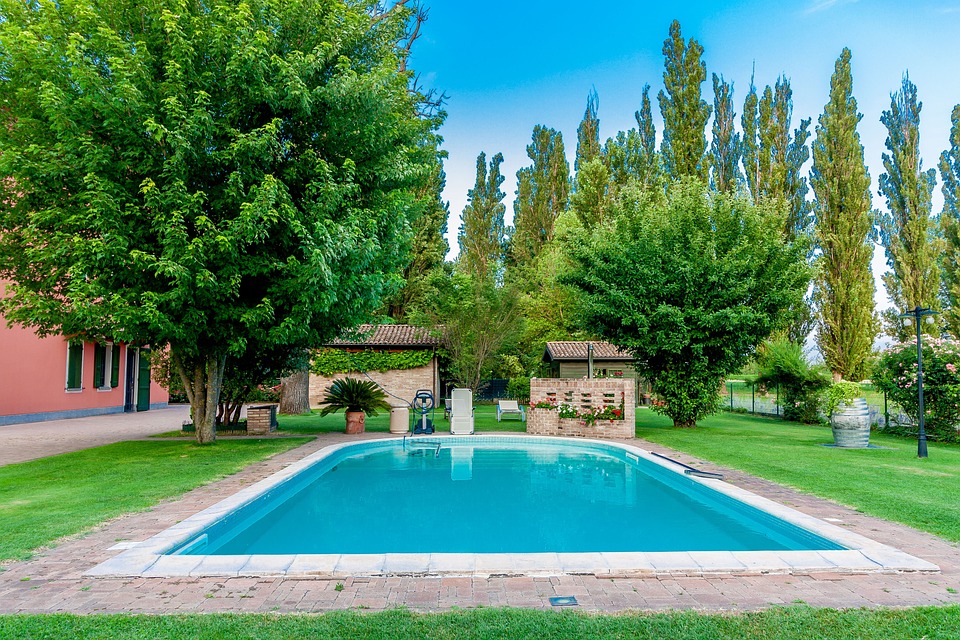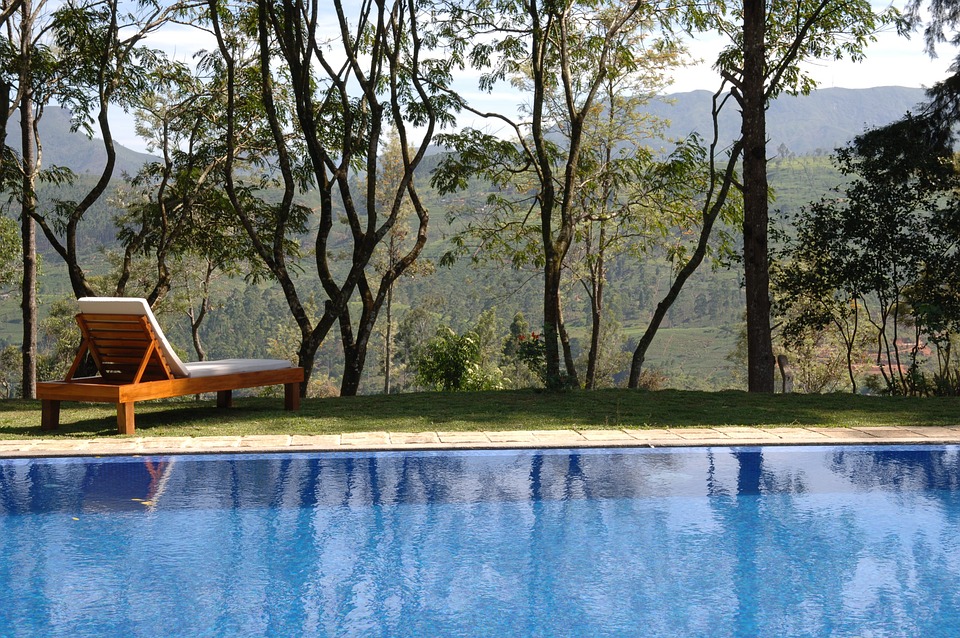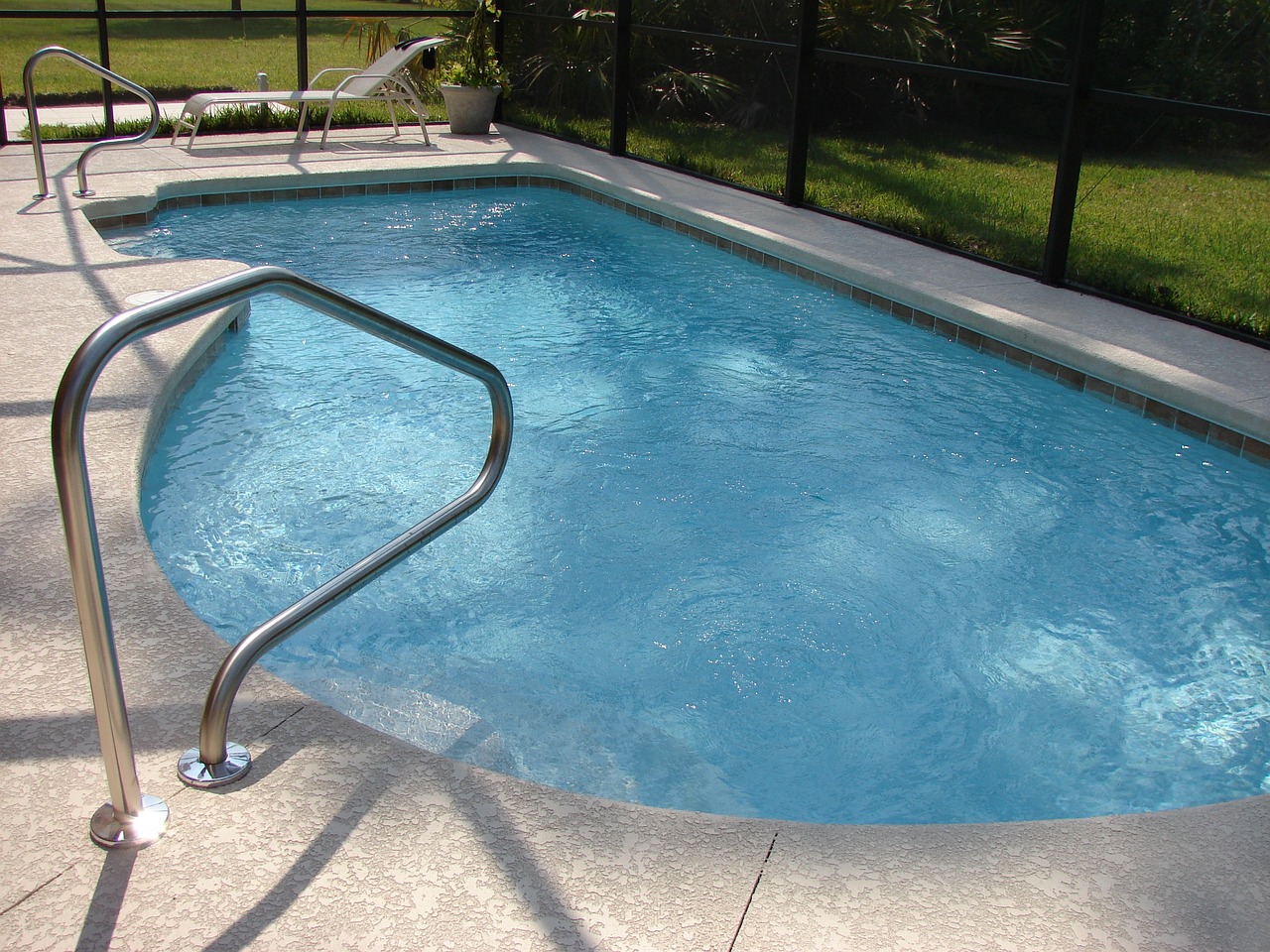Creating a harmonious blend of pool and garden in your backyard can transform your outdoor space into a serene oasis. By thoughtfully combining a pool and garden, you can achieve a multifunctional area that not only enhances relaxation but also significantly boosts your property’s aesthetic appeal. This guide will walk you through the process of integrating these two elements to create a stunning outdoor retreat.
Benefits of Combining a Pool with a Garden
The fusion of a pool and garden offers numerous advantages that go beyond mere aesthetics. Let’s explore the key benefits of this combination.
Enhancing Visual Appeal and Property Value
A well-designed pool and garden integration can dramatically improve your property’s appearance and worth. Consider these aesthetic benefits:
- Visual harmony: The lush greenery softens the hard edges of the pool, creating a balanced and inviting landscape.
- Increased curb appeal: A beautifully landscaped pool area becomes a focal point, drawing admiration from passersby and potential buyers.
- Added property value: Homes with thoughtfully designed outdoor spaces tend to command higher prices in the real estate market.
- Extended living space: The pool and garden combination effectively expands your usable living area, blurring the lines between indoor and outdoor spaces.
- Year-round interest: With proper plant selection, your outdoor space can remain visually appealing throughout all seasons.
Creating a Wellness Oasis
The combination of water and greenery creates a powerful wellness retreat right in your backyard. Here’s how it contributes to your mental and physical well-being:
| Plant Feature | Wellness Benefit |
|---|---|
| Fragrant flowers | Aromatherapy, stress reduction |
| Dense foliage | Improved air quality, noise reduction |
| Colorful blooms | Mood enhancement, visual stimulation |
| Herbs and edibles | Encourages healthy eating habits |
| Shade trees | Natural cooling, UV protection |
Moreover, the presence of a pool surrounded by nature:
- Promotes outdoor exercise and physical activity
- Provides a space for relaxation and meditation
- Encourages social interaction and family bonding
- Offers a natural setting for stress relief and mental rejuvenation
Planning Your Outdoor Space
Before diving into the design phase, it’s crucial to plan your outdoor space carefully. This ensures that your pool and garden combination meets your needs and fits seamlessly into your property.
Assessing Your Space and Needs
Follow this step-by-step guide to evaluate your available space:
- Measure the area: Accurately measure your outdoor space to determine the feasible size for your pool and garden.
- Analyze sunlight patterns: Observe how sunlight moves across your yard throughout the day to plan for both sun-loving and shade-tolerant plants.
- Assess soil quality: Test your soil to understand its composition and drainage capabilities.
- Identify existing features: Note any trees, structures, or landscaping elements you want to preserve or remove.
- Check local regulations: Research local zoning laws and homeowners’ association rules regarding pool installation and landscaping.
Use this checklist for a comprehensive property assessment:
- Available square footage
- Soil pH and composition
- Drainage patterns
- Existing vegetation
- Sun exposure and shaded areas
- Utilities and underground lines
- Access points for construction equipment
- Views to preserve or screen
- Privacy concerns
Defining the Purpose
Consider the primary goals for your outdoor space. Different purposes will influence your design choices. Here are some potential themes and purposes:
- Family-friendly fun zone: Focus on safety features, shallow areas, and durable plants.
- Romantic retreat: Emphasize mood lighting, intimate seating areas, and fragrant flowers.
- Entertainment hub: Include ample deck space, outdoor kitchen facilities, and versatile seating options.
- Fitness and wellness center: Incorporate a lap pool, yoga deck, and invigorating plant aromas.
- Natural sanctuary: Use native plants, create wildlife habitats, and implement eco-friendly practices.
- Modern minimalist: Choose clean lines, geometric shapes, and a limited color palette.
- Tropical paradise: Select lush, exotic plants and vibrant colors to create a vacation-like atmosphere.
- Mediterranean escape: Use terracotta colors, olive trees, and lavender for a European flair.
Designing the Pool Area

The pool is often the centerpiece of your outdoor space, so its design is crucial to the overall aesthetic and functionality of your backyard oasis.
Choosing the Right Pool Design
Select a pool shape that complements your garden style and meets your needs. Consider the following options:
| Pool Shape | Garden Style Suitability | Characteristics |
|---|---|---|
| Rectangle | Modern, formal | Clean lines, maximizes swim space |
| Freeform | Natural, tropical | Organic curves, blends with landscaping |
| Oval | Classic, versatile | Softer than rectangle, still good for laps |
| L-Shape | Family-friendly | Separate shallow and deep areas |
| Infinity edge | Contemporary, view-focused | Creates visual continuity with surroundings |
When selecting your pool design, also consider:
- Size: Ensure it’s proportionate to your yard and leaves room for garden elements.
- Depth: Variable depths accommodate different activities and safety levels.
- Entry points: Steps, beach entries, or ladders affect both aesthetics and accessibility.
- Material: Concrete, fiberglass, or vinyl liners each have unique looks and maintenance needs.
Adding Water Features and Lighting
Enhance the ambiance of your pool and garden combination with these popular features:
- Waterfalls: Create a natural, soothing sound and visual interest.
- Fountains: Add elegance and the relaxing sound of trickling water.
- Bubblers: Provide a playful element and gentle water movement.
- Scuppers: Offer a modern, architectural water feature.
- LED lighting: Illuminate the pool and surrounding areas for nighttime enjoyment.
- Fiber optic lighting: Create starry effects or color-changing moods.
- Underwater speakers: Enjoy music while swimming.
- Fire features: Combine fire and water elements for a dramatic effect.
Strategically placed lighting can transform your pool and garden area into a magical nighttime retreat while also enhancing safety.
Integrating the Garden Elements
A well-integrated garden can turn your pool area from a simple water feature into a lush, inviting paradise.
Selecting Poolside Plants
Choose plants that can withstand splashing water and potential chemical exposure. Here’s a list of low-maintenance, water-resistant plants with visual appeal:
- Ornamental grasses: Provide texture and movement (e.g., Fountain Grass, Blue Fescue)
- Succulents: Drought-tolerant and architectural (e.g., Agave, Echeveria)
- Tropical plants: Create a resort-like atmosphere (e.g., Bird of Paradise, Canna Lilies)
- Hardy perennials: Offer recurring blooms (e.g., Daylilies, Black-Eyed Susans)
- Evergreen shrubs: Provide year-round structure (e.g., Boxwood, Yew)
- Palm trees: Add a tropical touch (e.g., Sago Palm, Windmill Palm)
- Ferns: Thrive in shaded, humid areas (e.g., Boston Fern, Maidenhair Fern)
- Flowering vines: Soften hardscapes (e.g., Clematis, Jasmine)
Creating Zones and Layers
Use different plant heights and types to create depth and interest around your pool area:
- Ground cover: Low-growing plants like creeping thyme or sedum for pool edges
- Low layer: Small shrubs or ornamental grasses (1-3 feet tall)
- Mid-layer: Medium shrubs or small trees (3-6 feet tall)
- Tall layer: Large shrubs or trees for privacy and shade (6+ feet tall)
- Vertical elements: Trellises with climbing plants or tall, narrow trees
Suggested plant combinations for a layered look:
- Tropical theme: Palm trees, bird of paradise, and creeping jenny
- Mediterranean style: Olive trees, lavender, and thyme
- Modern minimalist: Bamboo, ornamental grasses, and mondo grass
- Cottage garden: Roses, daylilies, and creeping phlox
Eco-Friendly Considerations

Incorporating sustainable practices into your pool and garden design is not only good for the environment but can also reduce maintenance costs.
Water Conservation Tips
- Install a pool cover to reduce evaporation
- Use drought-resistant plants in the surrounding landscape
- Implement a rainwater harvesting system for irrigation
- Choose efficient pool filtration systems
- Maintain proper chemical balance to reduce the need for water changes
- Use mulch in garden beds to retain moisture
- Install drip irrigation or soaker hoses for targeted watering
- Consider permeable paving materials to reduce runoff
Using Native Plants
Native plants are adapted to local conditions, requiring less water and maintenance. They also support local ecosystems and wildlife.
| Region | Recommended Native Plants |
|---|---|
| Northeast | Black-Eyed Susan, Coneflower, Bee Balm |
| Southeast | Beautyberry, Yaupon Holly, Muhly Grass |
| Midwest | Prairie Dropseed, Purple Coneflower, Butterfly Weed |
| Southwest | Desert Marigold, Penstemon, Agave |
| Northwest | Sword Fern, Oregon Grape, Salal |
| California | California Lilac, Manzanita, Coast Live Oak |
Benefits of using native plants:
- Reduced water consumption
- Lower maintenance requirements
- Increased resistance to local pests and diseases
- Support for native wildlife and pollinators
- Enhanced sense of place and local character
Maintenance and Care
Proper maintenance is key to keeping your combined pool and garden space looking its best year-round.
Pool and Garden Care Routine
Follow this seasonal checklist for comprehensive maintenance:
Spring:
- Clean and prepare the pool for the season
- Prune winter-damaged plants
- Apply pre-emergent weed control
- Test and balance pool water chemistry
- Plant annuals and perennials
Summer:
- Regular pool cleaning and chemical balancing
- Deadhead flowers and prune as needed
- Monitor for pests and diseases
- Water plants deeply during dry spells
- Trim pool-side plants to prevent debris in the water
Fall:
- Prepare pool for winter (if applicable)
- Plant spring-blooming bulbs
- Clean up fallen leaves
- Divide overgrown perennials
- Apply mulch to protect plant roots
Winter:
- Protect sensitive plants from frost
- Maintain winter pool cover
- Plan for next season’s improvements
- Prune dormant trees and shrubs
- Monitor for snow and ice damage
Professional Help vs. DIY Maintenance
Consider the pros and cons of hiring professionals versus maintaining the space yourself:
| Aspect | Professional Maintenance | DIY Maintenance |
|---|---|---|
| Cost | Higher upfront cost | Lower immediate cost, potential for long-term savings |
| Time investment | Minimal time required from homeowner | Significant time commitment |
| Expertise | Access to professional knowledge and equipment | Learning curve, potential for mistakes |
| Customization | Less control over day-to-day care | Complete control over methods and products used |
| Consistency | Regular, scheduled maintenance | Dependent on homeowner’s schedule and motivation |
Ultimately, the choice between professional and DIY maintenance depends on your budget, available time, and personal preferences. Many homeowners opt for a combination, handling routine tasks themselves and calling in professionals for more complex issues or seasonal services.
By carefully planning and maintaining your combined pool and garden space, you can create a beautiful, functional, and relaxing outdoor retreat that adds significant value and enjoyment to your home. This harmonious integration of water and greenery will provide a serene escape for years to come, offering a perfect balance of natural beauty and refreshing recreation right in your own backyard.

